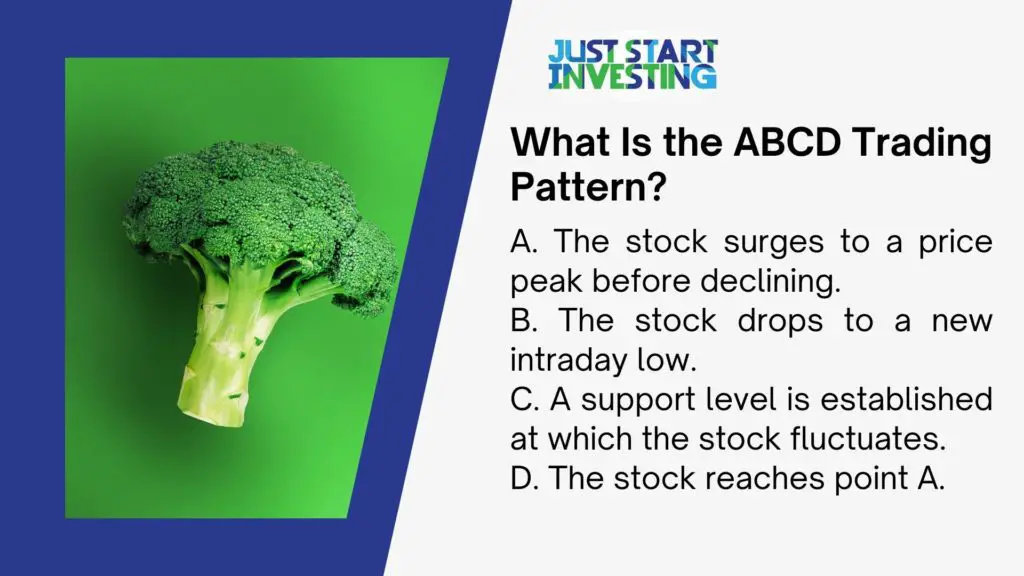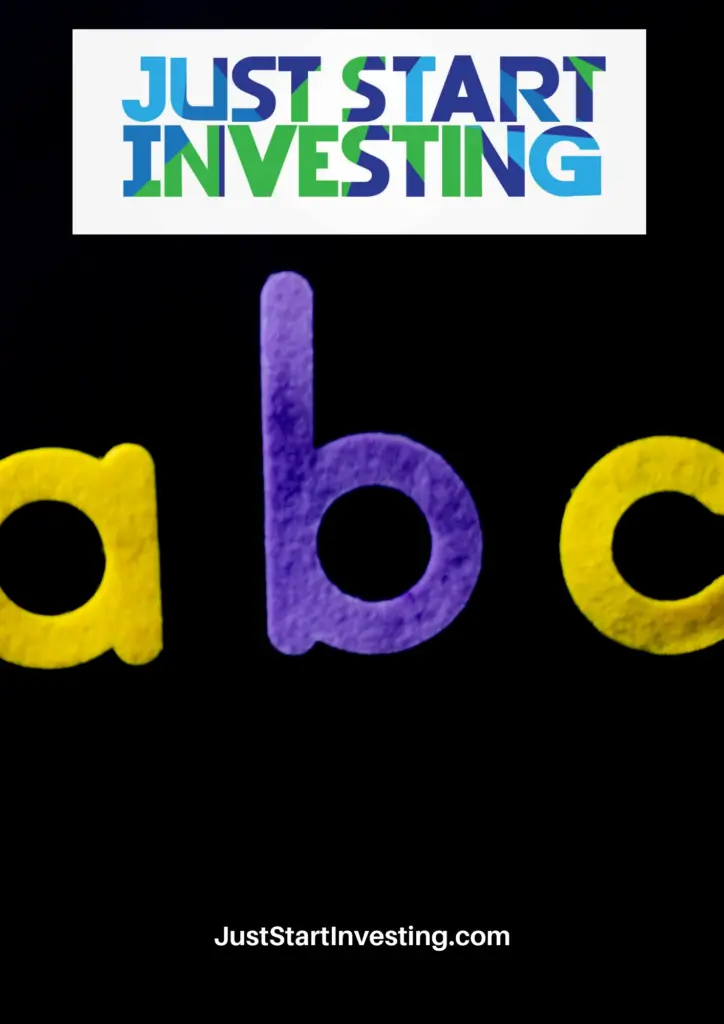The ABCD pattern trading is the most important concept for new traders to grasp, and it’s all about recognizing patterns in stock charts. The way of this chart is something we’ve all seen before. It’s simple to remember once you know what you’re looking for. It can help you time your purchases and sales more effectively. It can also boost your trading confidence.
What Is the ABCD Trading Pattern?

The ABCD pattern, as the name implies, is a four-step sequential behavior in a stock’s charting that can be seen throughout its history. It has three consecutive price swings (A, B, C) and a buy/sell action (D). This sort of design may appear at any moment in time, whether in a market. Here’s how it works:
A. The stock surges to a price peak before declining.
B. The stock drops to a new intraday low.
C. A support level is established at which the stock fluctuates.
D. The stock reaches point A.
To new traders, stock up and down movements may appear chaotic. On the other hand, establishing high, low, and support levels provides traders with a better idea of how the stock will perform in the future. Moreover, it’s a reliable predictor of when it’s time to go in or out of a position before the stock bounces back up or down.
There are three ABCD formations, each of which may be utilized for a bullish or bearish trend: AB=CD, Classic ABCD, and ABCD Extension. There are restrictions for each design, but the essence is the same: a price fluctuation in measurable concordance. Of course, the time frame varies, or how quickly a stock reaches critical levels in an ABCD chart pattern.

Why Is the ABCD Pattern Important?
The ABCD pattern is the most basic market formation to identify and serves as the basis for other appearances. The Fibonacci sequence, for example, is based on dividing one number by another in a series.
Traders are searching for the crucial Fibonacci ratio 61.8 percent in the ABCD pattern trade. C Point should ideally be 61.8% of lines AB. If so, traders can use the sequence to forecast when to enter or exit their positions by charting the value of point D using the Fibonacci sequence.
The first step in recognizing other patterns, such as a flag pattern or a rising/falling wedge, is acknowledging an ABCD pattern. When several ways converge on top of the bearish ABCD pattern, it’s generally a good indication that the stock will follow a particular course. Traders may take more risks at higher values because of the precision.
How to Start Trading Using the ABCD Trading Pattern
Step 1: Look At All Indicators
The ABCD pattern is an intraday formation. As a result, you must also think about the extended chart. If there’s a lot of resistance overhead or if it has one-and-done Strikes, ignore the stock.
It’s likely to be tradable if the stock has broken through multi-year resistance, and the multiday chart shows it can keep its gains for longer.
Another important indicator to consider is volume. This is the second most crucial signal after the price chart. A stock must have a significant amount of book to qualify.
It’s also great if it’s in a hot sector, has a small float, and is accompanied by excellent news. For example, a wild-going stock may pass through an ABCD pattern in a hot industry.
Step 2: Patience Pays
Let’s say you buy a stock that goes up by 100% in 24 hours. You’ve been waiting for the breakout with bated breath, but your portfolio might take a beating when the price finally achieves its goal.
Please accept that this will occur and are OK with missing out on the deal. However, chasing is not a strategy. An ABCD pattern stock does not grind higher all-day trading. So it won’t have the own distinct risk you’re looking for.
It’s difficult missing a play because it doesn’t fulfill all of your requirements. But remember that the pickier you are — the better your chances.
Step 3: Set Alerts
Not having enough time to monitor the market all day might be frustrating. However, they may also assist you in avoiding the urge to go in early.
Set an alert for when the stock reaches the top of the A leg in the afternoon. This allows you to be prepared for breakouts without monitoring every tick.
Then, check back in the afternoon, around 1 p.m., to see if the stock is grinding higher.
Step 4: Enter Trade
This is where you’ll place your bet. When the stock breaks through the high of the day in the afternoon, your entry should generally be a C.
Step 5: Stick to Your Plan
If the stock breaches your risk level, get out as quickly as possible. Be prepped for the possibility of this happening. There will be another ABCD pattern in wait around the corner.
If the stock rises through the day’s high, aim to sell it at least 2:1 risk/reward. Then, when the stock appears to be reversing, sell into strength.
If the stock appears extremely strong, you might sell half at your target and leave the rest later. Penny stocks are not good businesses, so keep that in mind if you trade them. To be effective in the penny stock market, you must sell early in the afternoon rally and avoid being excessive.
Common Mistakes in ABCD Pattern Trading

The most common mistake in ABCD pattern trading is detecting an ABCD pattern when there isn’t one. Stocks that are highly volatile and change direction rapidly over a short period of time may exhibit indications of an ABCD pattern. However, despite the market moving in a specific order, it’s tough to pinpoint support levels in these companies.
When seeking ABCD patterns, keeping an eye on volume is crucial. Volume is typically high during the pattern’s formation (when things are happening) and as the trend closes. If the pattern forms slowly, this is a bad sign. The formation of the way might not be caused by regular trading activity. Instead, it may be due to factors outside your control that make the setup more volatile than intended.
Tips for trading the ABCD Pattern
The ABCD pattern is straightforward, but it may be tough to perfect. Compared to other ways, there are many more variables to consider.
Only trade the best setups, and don’t forget to be selective. You can accomplish this by being extremely picky. If the chart isn’t good enough to print and hang on your wall — disregard it!
It’s one thing to know when it’s appropriate to trade, but knowing when not to do so is also essential. So before you trade a stock price, make sure you complete all of your trading checklist items.
Entry Point
Traders often enter an ABCD pattern at the breakout over morning highs. That’s usually after 1 p.m. or thereabouts.
However, remember that you established your risk at the bottom of the point B leg. Therefore, if the breakout is too far from the bottom of the B leg, it’s best to skip the trade entirely.
In a few unusual situations, you may get the C leg before the breakout, such as when a stock grinds to a halt on high volume.
Low Volume on Consolidation
The consolidation should be low volume and a consistent grind-up. This demonstrates deliberate buying throughout the day.
It’s best to skip a stock if it’s very choppy or puts in more volume than the A leg during this time. It might be an indication that there are a lot of short sellers competing with the buyers.
If it does, the stock will get stopped right away.
High Volume on Breakout
The more volume there is on the breakout, the better its chances of succeeding.
A low-volume breakout indicates that there is little interest in the stock. It can quickly fool and develop a double top rather than a solid D leg.
Exit Point
Some variables determine your exit strategy. For example, if the B leg’s bottom is in a tight range with the A leg’s morning top, you may wish to use 3:1 risk/reward as your target. 2:1 might be another option in other cases. It all depends on your stock’s definition of a reasonable goal.
Some traders attempt to swing a stock in one day. However, this is more often than not an unanticipated negative consequence, so bear that in mind. There may be a special event or a terrible selling-off going on overnight.
However, if the chart is fantastic and the hot market, you might consider it. Take some profits before the closing bell rings!
VWAP
The maximum amount you can risk by using a modified ABCD pattern, the VWAP-hold, high-of-day break, is defined as your volatility.
With this combination, you’re ABCD trading patterns, but also expect the stock to stay near its VWAP all day. If the stock is below it and uninterested. Will remove a lot of unsavory plays in this way.
Risk Management on the ABCD Pattern
Trading on the patterns necessitates using a PRZ, often referred to as the Implied Reversal Zone. A simple rule of thumb to follow when trading is to place two targets at 38.2 percent and 61.8% of the top to bottom (or bottom to top) retracement, with the first one being at 38.2 percent of the top to bottom (or bottom to top) retracement and the second one being at 61.8%. The stop will be set at half the distance between the entry and the second objective, resulting in a 2.0 risk-reward ratio. In general, I take half of my profits at the first target and move my stop to breakeven so that I do not lose money on the trade if the price comes back unfavorably.
Final Thoughts
Traders see that the market will likely turn around after a strong trend. Therefore, traders who follow the ABCD pattern are on the lookout for a second occasion when a trend may come to a halt and reverse. In other words, they’re looking for trading opportunities to buy while a market is falling and seeking a short-selling possibility while it’s going up.
The ABCD pattern combines the same timeframe, price, and form. When the three elements merge at one point, the pattern generates an electric move that traders can use to identify potential reversal zones and retrace their steps.

Just Start Investing is a personal finance website that makes investing easy. Learn the simple strategies to start investing today, as well as ways to optimize your credit cards, banking, and budget. Just Start Investing has been featured on Business Insider, Forbes, and US News & World Report, among other major publications for its easy-to-follow writing.
